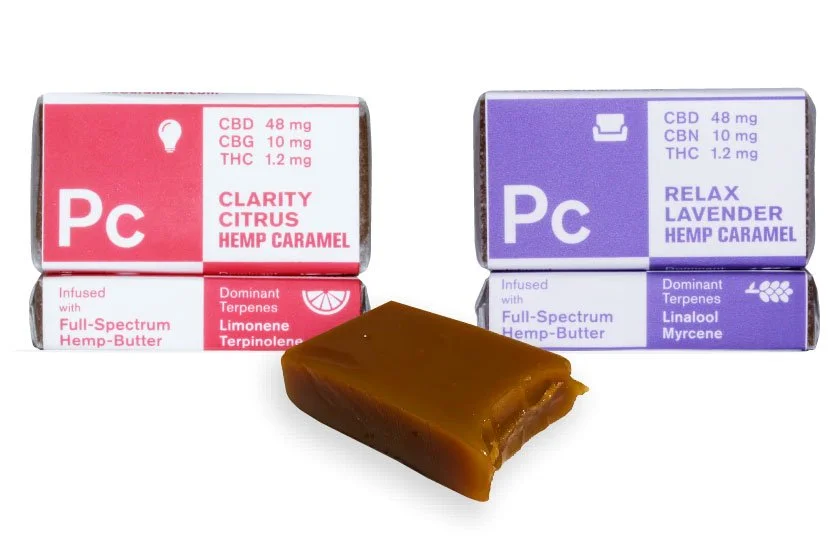Sativa vs Indica for Hemp: What these Terms Really Mean
Understanding “Sativa” and “Indica” in the Hemp World
The Basics - Hemp vs Cannabis
Click image to enlarge
The “hemp” or cannabis plant contains hundreds of chemical compounds that impact the way derived products make us feel. Cannabidiol (CBD) and delta-9-tetrahydrocannabinol (THC) are part of a group of molecules known as cannabinoids that are derived almost exclusively from the cannabis plant.
When it comes to the cannabis plant and the definition of hemp though, there are a lot of different terms that can cause confusion for consumers.
Unfortunately with the CBD industry still being in its infancy, there hasn’t been much done in the way of standardizing terminology across the industry.
“Hemp” is defined by the US government as cannabis with no more than 0.3% THC by weight, a low percentage aimed at reducing the psychoactive effect of hemp & its derived products. Beyond this difference in THC percentage, “hemp” and high-THC “cannabis” as sold in state legal markets are virtually identical plants - hemp essentially IS cannabis!
So how do “Indica” and “Sativa” fit into Cannabis and Hemp?
Cannabis is the genus name for a somewhat diverse group of plants. Within that group is a species of plants called “Cannabis Sativa L.”, which are sometimes further differentiated with the terms “sativa” and “indica”.
It was long believed that the terms “Sativa” and “Indica” referred to two entirely different species of the Cannabis genus, and that the two species were responsible for different effects when consumed.
This ideology is slowly changing as the industry grows & more study is conducted, but there are still many who believe that an Indica strain will be more sedative and better used for sleep or general relaxation, while a Sativa strain provides uplifting, energetic effects.
The Real Science of Sativa and Indica
Without getting too deep into the weeds of plant classification or “taxonomy”, Sativa and Indica strains as we know them today are actually both “sub-species” of Cannabis Sativa L. So technically the proper name for a true “Sativa” would be Cannabis Sativa sub-species Sativa, and an “Indica” would be Cannabis Sativa sub-species Indica …clear as mud right?
To make matters even more convoluted, due to the black market nature of cannabis breeding in the US, the vast majority of the strains available on the legal market today are actually hybrids of Sativa & Indica plants rather than pure lines of one or the other - these are called “landrace” strains & are extremely rare.
What I’m getting at is the terms Sativa and Indica as marketed today are not true indicators of how the plant will make you feel. That is determined by the cannabinoids contained in the plant itself, and more specifically by the concentration and combination of CBD, THC, minor cannabinoids and Terpenes.
So what do Sativa and Indica labeling on products really mean for you as the consumer?
Great question!
The terms Sativa and Indica apply to two subspecies of cannabis that have noticeable physiological differences in how they grow. These differences may impact their cannabinoid & terpene ratios, but not in a way we can consistently predict with science yet - they mostly relate to physical appearance only.
The defining difference between these subspecies names is their overall plant height, thickness, and leaf shape.
As the image below shows, Sativa is a more elongated and sparse plant, whereas Indica is a much shorter, stockier plant with thicker foliage. However, these terms were still applied haphazardly by early growers to their plants while cross-breeding, leading to much murkiness in the true genetics of modern cannabis plant classification.
Image reference: https://www.liebertpub.com/doi/full/10.1089/can.2018.0039
Does CBD come from “Sativa” or “Indica”?
Is “Hemp” Indica or Sativa?
Modern “Sativa” and “Indica” strains, including drug cultivar “cannabis” and legally defined “hemp”, can produce THC, CBD, and minor cannabinoids in varied ratios - sometimes being more THC-dominant (as is the case for most Sativa & Indica-labeled strains in legal cannabis dispensaries) and sometimes bred for more CBD production with less THC through selective breeding, as is the case for hemp.
However, most industrial hemp and newer craft hemp plants grown in the US for CBD products are descended from the original European Cannabis Sativa plants, which historically had more CBD than THC and were therefore naturally less intoxicating.
The ancient Asian “Indica” subspecies seemed more predisposed to high THC content than their contemporary European Sativa cousins, which made them more intoxicating when consumed and may have been an early cause for the “Indica causes sedation” correlation - which has effectively become myth in today’s cannabis world due to intense subspecies cross-breeding and rise in THC concentration for both “Sativas” and “Indicas” grown in the US.
As the CBD market continues to mature, consumers become more educated on how to choose hemp products, and more studies & scientific data are collected around the cannabis plant, these terms will hopefully begin to standardize across the industry to have more consistent meanings.
The goal is to standardize them in the correct way, rather than perpetuating the current cultural Sativa/Indica effects dichotomy, so the terms we use are based in science and proper taxonomy.
The CBD industry will only survive if we continue to build a solid foundation of understanding and fact-finding based in the scientific process.
Resources:
https://www.liebertpub.com/doi/full/10.1089/can.2018.0039
https://www.leafly.com/news/cannabis-101/sativa-indica-and-hybrid-differences-between-cannabis-types
https://www.uspharmacist.com/article/cannabidiol-use-in-older-adults



